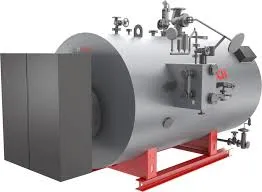
Nov . 11, 2024 08:03 Back to list
temperature of water in boiler
Understanding the Temperature of Water in a Boiler
The temperature of water in a boiler is a crucial parameter that directly affects the efficiency, safety, and performance of the heating system. Boilers are widely used in various industries and residential settings to provide heat for different applications, including space heating, hot water supply, and industrial processes. Understanding the dynamics of water temperature in a boiler is essential for ensuring optimal functionality and operational safety.
Understanding the Temperature of Water in a Boiler
The specific temperature at which water is heated in a boiler depends on the intended application. In residential heating systems, water typically reaches temperatures ranging from 130°F to 180°F (approximately 54°C to 82°C). In contrast, industrial processes may require higher temperatures, sometimes exceeding 200°F (93°C) or even reaching up to 300°F (149°C) in high-pressure steam boilers. The higher the temperature and pressure within the boiler, the more efficient the system can potentially be, allowing for quicker heat transfer and better energy utilization.
temperature of water in boiler

However, maintaining the correct temperature is not just about efficiency; it also relates to safety. An excessively high temperature can lead to dangerous situations, including boiler ruptures or catastrophic failures. Safety mechanisms, such as pressure relief valves and temperature controls, are implemented to prevent such incidents. These safety features are designed to monitor the temperature and pressure within the boiler and automatically release excess pressure or shut down the system if temperatures exceed safe limits.
Moreover, the water temperature in the boiler impacts energy consumption. An efficiently managed boiler can keep water at optimal temperature levels without consuming excessive amounts of energy. Regular maintenance, including the monitoring of temperature gauges and pressure systems, is vital to ensure the equipment operates within desired parameters. Poor maintenance can lead to overheating, scaling, and other issues that compromise both safety and efficiency.
Another important aspect of managing water temperature in a boiler is understanding the relationship between temperature and water quality. The presence of impurities and minerals in water can lead to scaling, which reduces heat transfer efficiency and raises the risk of overheating. Regular water testing and treatment can help maintain water quality, ensuring the boiler operates effectively while extending its lifespan.
In conclusion, the temperature of water in a boiler is a pivotal factor influencing the system's performance, efficiency, and safety. Proper temperature management, along with regular maintenance and water treatment, are essential practices for ensuring that boilers operate effectively and safely in various applications. By understanding and controlling the water temperature within the boiler, users can achieve better energy efficiency, reduce operational costs, and enhance overall system reliability. As technology advances, the development of smarter control systems and better materials continues to improve how we manage the temperature of water in boilers, offering promising solutions for future energy needs.
-
Oil Fired Hot Water Boilers Sale - High Efficiency & Affordable
NewsJul.31,2025
-
High-Efficiency Commercial Oil Fired Steam Boiler for Industry
NewsJul.30,2025
-
High-Efficiency Biomass Fired Thermal Oil Boiler Solutions
NewsJul.30,2025
-
High Efficiency Gas Fired Thermal Oil Boiler for Industrial Heating
NewsJul.29,2025
-
High-Efficiency Gas Fired Hot Water Boiler for Sale – Reliable & Affordable
NewsJul.29,2025
-
High Efficiency Biomass Fired Hot Water Boiler for Industrial and Commercial Use
NewsJul.29,2025
Related PRODUCTS






















